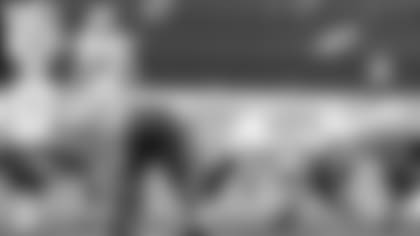FRISCO, Texas – With so many questions to answer, this series will take a look at each position on the roster, and what choices might face the front office heading into 2021.
We'll continue this look at the Cowboys' running back situation by examining the ball carriers behind Ezekiel Elliott.
How Good Does The Depth Chart Look?
The Cowboys are a bit of a rarity in the modern NFL in the sense that they employ a true feature back. In a league full of committees, Ezekiel Elliott is one of a handful of running backs who stills fits the "bell cow" description.
Elliott carried the rock 244 times in 2020, accounting for 57% of the Cowboys' overall rushing attempts.
Among the 13 backs who eclipsed the 900-yard mark last season, that percentage ranks sixth. Only Tennessee's Derrick Henry, Jacksonville's James Robinson, Minnesota's Dalvin Cook, Chicago's David Montgomery and Las Vegas' Josh Jacobs accounted for a higher share of their team's touches.
That's a roundabout way of saying that running back depth hasn't been a big concern for the Cowboys since they drafted Elliott in 2016 – but they sure did manage to find it anyway.
If we're looking for positives from an otherwise dismal 2020 season, the continued emergence of Tony Pollard was undoubtedly one of them.
Originally a fourth-round draft pick out of Memphis, Pollard impressed as a rookie in 2019 and continued to build on that in his second season.
Yes, it's fair to point out that the second-year back struggled at times in his special teams roles. Pollard had several miscues throughout the season, including a muffed kickoff against Seattle that stranded the Cowboys at their own 1-yard line and led to a safety.
Still, the season was easily an overall Pollard – especially in the later stages, when Elliott was hampered by a calf injury.
A bit of a forgotten man in the early part of the season, Pollard took 45 of his 101 carries in the final five weeks of the season.
He showed his stuff against San Francisco, in particular. With Elliott sidelined by that calf problem, Pollard carried the ball 12 times for 69 yards and two scores, including a 40-yard dash late in the fourth quarter that saw him break several tackles and put the game out of reach.
It was a solid enough performance that it prompted many to wonder if Pollard deserved a higher percentage of the workload – particularly while Elliott was working his way back to 100% health.
The Cowboys saw several other positive developments on the running back depth chart.
Rico Dowdle, an undrafted rookie out of South Carolina, signed on in the spring and had a good enough training camp to make the final roster.
As the third back on the depth chart, Dowdle's offensive contributions were negligible. He carried the ball seven times for 24 yards on the season, accounting for just 13 offensive snaps. But he did carve out a role for himself as a special teamer and a part time kick returner. Dowdle played 44% of the Cowboys' special teams snaps, highlighted by a 30-yard kick return – also against San Francisco, when Elliott was unavailable.
It's also worth mentioning fellow undrafted rookie Sewo Olonilua, though he was mainly a fallback option. The former TCU standout earned himself a practice squad spot after training camp, and that's where he spent most of the season. When Elliott's injuries cropped up, Olonilua was called up to the active roster for several weeks, though he didn't play any offensive snaps and was used sparingly on special teams.
All of this combines as a net positive for the Cowboys. Elliott is currently accounting for a whopping 6.5% of their salary cap, to along with his 57% share of the workload. It's fortuitous, then, that the trio of Pollard, Dowdle and Olonilua combine for a cap percentage of just 1.2%.
Is it the best depth chart in the NFL? Probably not. New England boasts an impressive stable of solid running backs, while teams like Cleveland and Baltimore employ the scary duos of Nick Chubb and Kareem Hunt, or J.K. Dobbins and Gus Edwards.
But Pollard has proven to be a plenty capable ball carrier, despite not receiving a huge percentage of the workload. Dowdle and Olonilua are intriguing, at the very least.
For a team that's paying $90 million to its starter, that's about as good as you can ask for.














